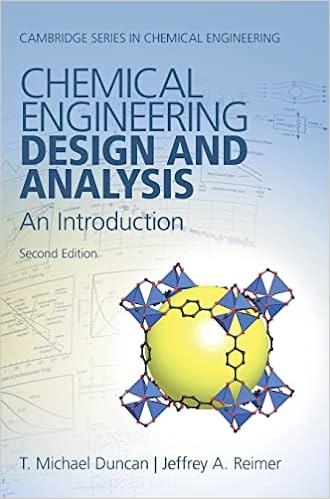Question
Answers have been provided (they are in bold), I just need to know how to do the problems. You are working on a team to
Answers have been provided (they are in bold), I just need to know how to do the problems.
You are working on a team to design a life support system for the next generation International Space Station. Obviously, air supply, water, and food are critical, as well as removal of waste products. Since the average Carbon:Hydrogen ratio of food is about 1:1, you will model food as C2H2. Food is metabolized into CO2 and H2O using O2 from the cabin atmosphere in the following reaction: C2H2+O2CO2+H2O (note: equation is unbalanced) The CO2, unused O2, N2, and a small portion (mole fraction of 0.050) of H2O leave via expiration from the lungs (i.e., exit stream 1). The rest of the water and a portion of unmetabolized food leave via a second exit stream. The fractional conversion of O2 is 0.80. The inlet molar flow rate of O2 is 100.0 mol/day and you may assume that the overall cabin atmosphere contains 25% v/v O2 and 75% v/v N2. The outlet molar flow rate of C2H2 is 0.10 times the outlet molar flow rate of O2. Assume that food intake is steady-state, even though it would actually be consumed at regular, discrete meals. a) Determine the reaction rate R. 32 mol/day if you set chemical basis as C2H2 = 1. b) Determine the fractional conversion of C2H2. 0.94 c) Determine the outlet molar flow rates of each component of exit stream 1. CO2: 64 mol/day O2: 20 mol/day N2: 300 mol/day H2O: 20.2 mol/day d) Determine the outlet molar flow rates of each component of exit stream 2. C2H2: 2 mol/day H2O: 11.8 mol/day
Step by Step Solution
There are 3 Steps involved in it
Step: 1

Get Instant Access to Expert-Tailored Solutions
See step-by-step solutions with expert insights and AI powered tools for academic success
Step: 2

Step: 3

Ace Your Homework with AI
Get the answers you need in no time with our AI-driven, step-by-step assistance
Get Started


